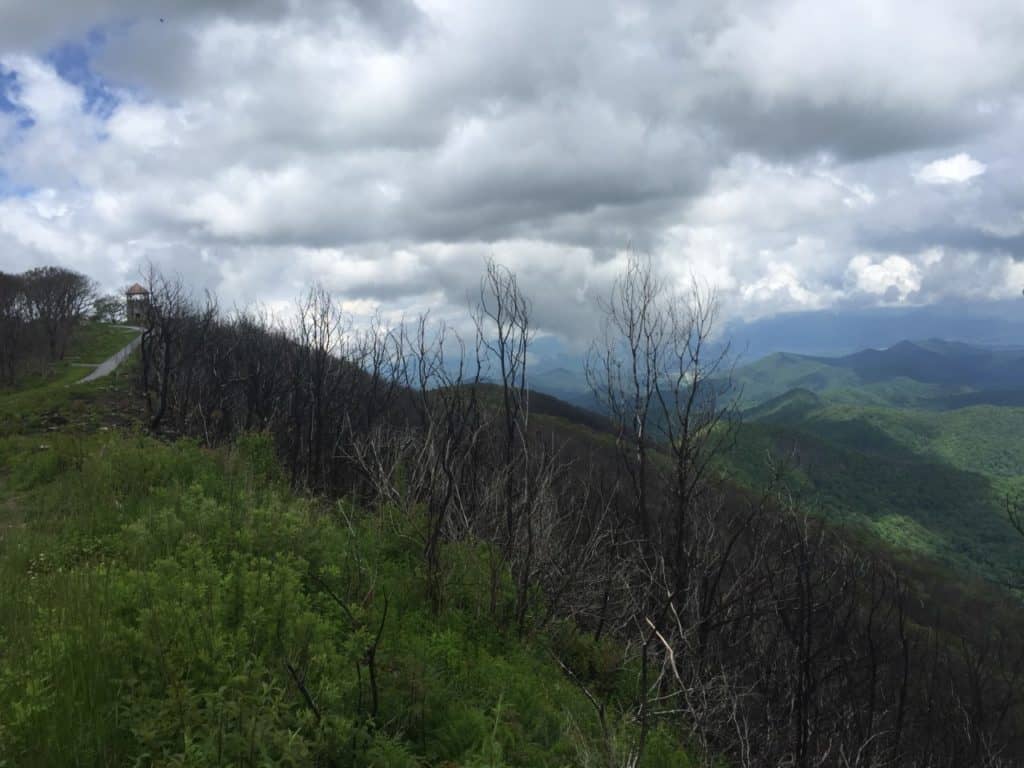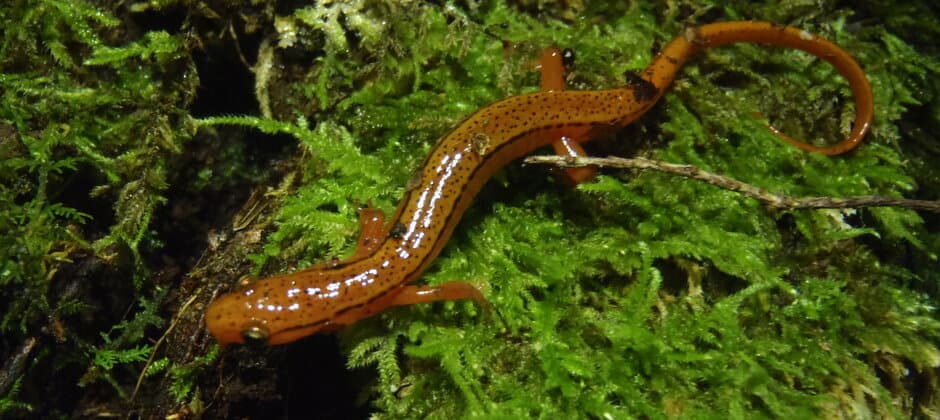Share this article
JWM: Some Appalachian salamanders deal with fire better than others
Mountain waterways may become refuges for salamanders after wildfires burn through parts of the Appalachian Mountains.
“These riparian habitats are providing really important shelter areas for some of these species, particularly the terrestrial species,” said Philip Gould, a biologist with the U.S. Geological Survey.
A fire swept through the Wayah Mountains in 2016, a year before Gould and his colleagues began conducting population surveys on three species of Appalachian salamanders—the Blue Ridge two-lined salamander (Eurycea wilderae), the Ocoee salamander (Desmognathus ocoee), and the red-legged salamander (Plethodon shermani).
The team planned to survey these species well before the fire occurred. But, they decided, the 2016 fire provided a good opportunity for them to look at how wildfire impacted the populations. Since they didn’t have any data in the area before the fire, they decided to compare the changes in populations of areas that were burned to areas that weren’t burned.
In a previous study, the same group looked at how wildfire impacted species in upland areas, while in this study, published recently in the Journal of Wildlife Management, they looked at the areas surrounding waterways. The researchers surveyed for the three species around five streams in burned areas and five streams in unburned areas. For three summers in 2017-2019, they walked 75-meter transects, walking perpendicularly away from the stream and recording every salamander they observed at night.

Burned rhododendron trees at Wayah Bald in North Carolina. Credit: Meaghan Gade
Their results showed that the fire most strongly affected the Blue Ridge two-lined salamander. Their population was the lowest in burned areas the first year after the fire, and they didn’t really recover in the three years after the fire, despite conditions returning more or less to what they were in unburned areas.
Ocoee salamanders, on the other hand, saw negative population effects starting in the second year, when favorable conditions helped boost the populations of the other two species in both unburned and burned areas. “There seemed to be a delayed negative impact related to wildfire compared to the unburned population,” Gould said, though it’s unclear still why their numbers were mostly affected in the second year.
Red-legged salamander numbers didn’t change much at all around riparian areas, which is good news for the species, Gould said. This contrasts with the findings of the earlier study in upland areas, where red-legged salamanders, the most terrestrial of the three species studied, saw more significant number drops.
Gould said that these findings suggests that, at least for some species, forests around streams seem to provide a refuge from the negative effects of the fire.

Researchers Meaghan Gade, Philip Gould, Addison Hoven, from left to right, surveying a transect in the Wayah Mountains in North Carolina. Credit: Kevin Fitzpatrick
But the team also found that following the fire, all three species found in burned areas were about five to 10 meters farther away on average from the actual waterways than they were showing up in unburned areas. This was surprising for the researchers, Gould said, as they would have expected to find the opposite.
“It may be related to reduced food for those animals, so they are forced to forage farther away,” Gould said. Or, he said, it might be that other larger species are outcompeting these salamanders around the streams after burns due to suboptimal conditions elsewhere.
The team also found a higher proportion of adult two-lined salamanders in burned areas after the fire than unburned areas. This may be due to lower breeding numbers during these years after the fire, or that a larger number of larval salamanders are leaving the area.
Red-legged salamanders, on the other hand, saw a decline in the proportion of adults in burned areas, perhaps due to immigration or to increased recruitment after the fire.
Altogether, research like this is improving our understanding of the ways in which fires affect amphibians, Gould said.
This article features research that was published in a TWS peer-reviewed journal. Individual online access to all TWS journal articles is a benefit of membership. Join TWS now to read the latest in wildlife research.
Header Image: A Blue Ridge two-lined salamander. Credit: Mark Spangler








